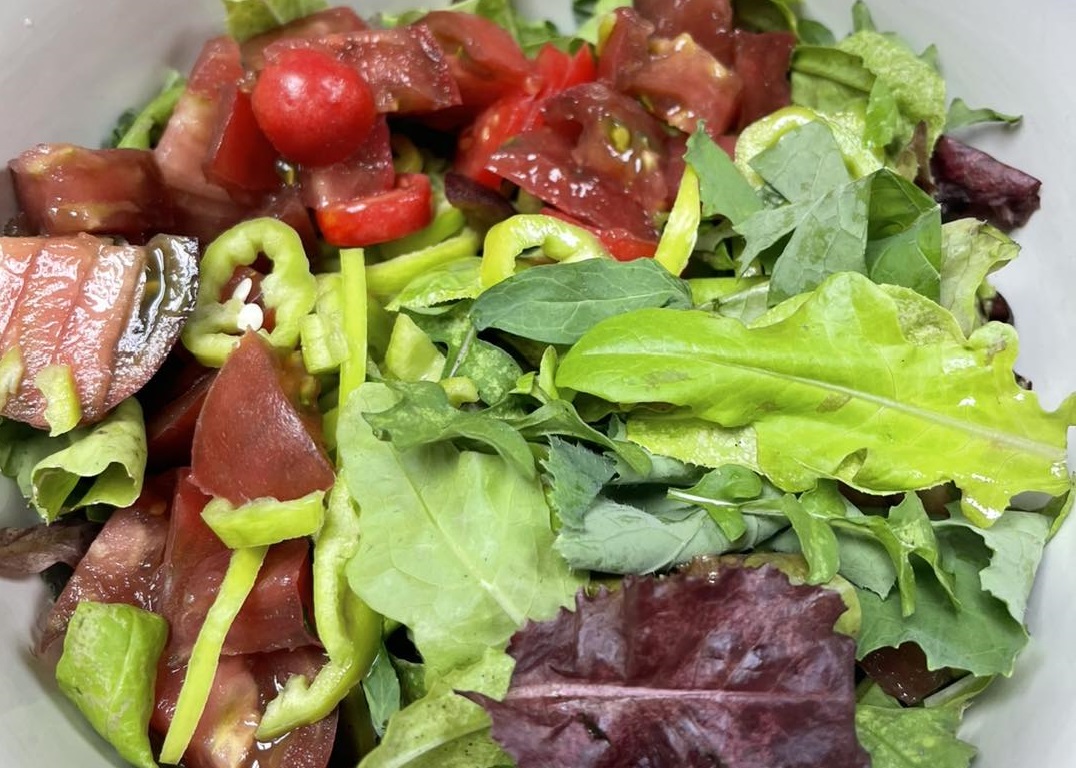There’s something incredibly satisfying about walking into your garden, picking fresh greens, and turning them into a delicious, healthy salad. Growing your own salad bar is not only rewarding but also ensures you have access to the freshest, most nutrient-packed ingredients. Whether you’re a seasoned gardener or a beginner, this guide will help you create a thriving salad garden right in your backyard (or even on your lanai!).
Why Grow Your Own Salad Bar?
Freshness: Nothing beats the taste of freshly picked greens.
Cost-Effective: Save money by growing your own produce.
Sustainability: Reduce your carbon footprint by avoiding store-bought, packaged greens.
Health Benefits: Homegrown veggies are free from harmful pesticides and chemicals.
What to Grow in Your Salad Garden
Here’s a list of easy-to-grow plants that will make your salads vibrant and flavorful:
- Leafy Greens
- Lettuce: Varieties like romaine, butterhead, and leaf lettuce grow quickly and can be harvested multiple times. One of my favorites is a red romaine type lettuce called Merlot.
- Spinach: A nutrient powerhouse that thrives in cooler weather. It’s a little too warm in Hawaii for spinach to grow well, but on the mainland, most people should be able to grow it for at least a few months each year. It grows and matures quickly.
- Kale: A hardy green that adds a hearty texture to salads. I love growing kale, it also grows fast and larger than spinach.
- Herbs
- Basil: Adds a fresh, aromatic flavor. Basil is easy to grow and comes in many varieties- each with it’s own distinct flavor.
- Cilantro: Perfect for adding a zesty kick. Cilantro does better in cooler climates, so it may be an early spring herb for most gardeners.
- Parsley: A versatile herb that complements almost any salad. Parsley is an easy to grow nutrient powerhouse.
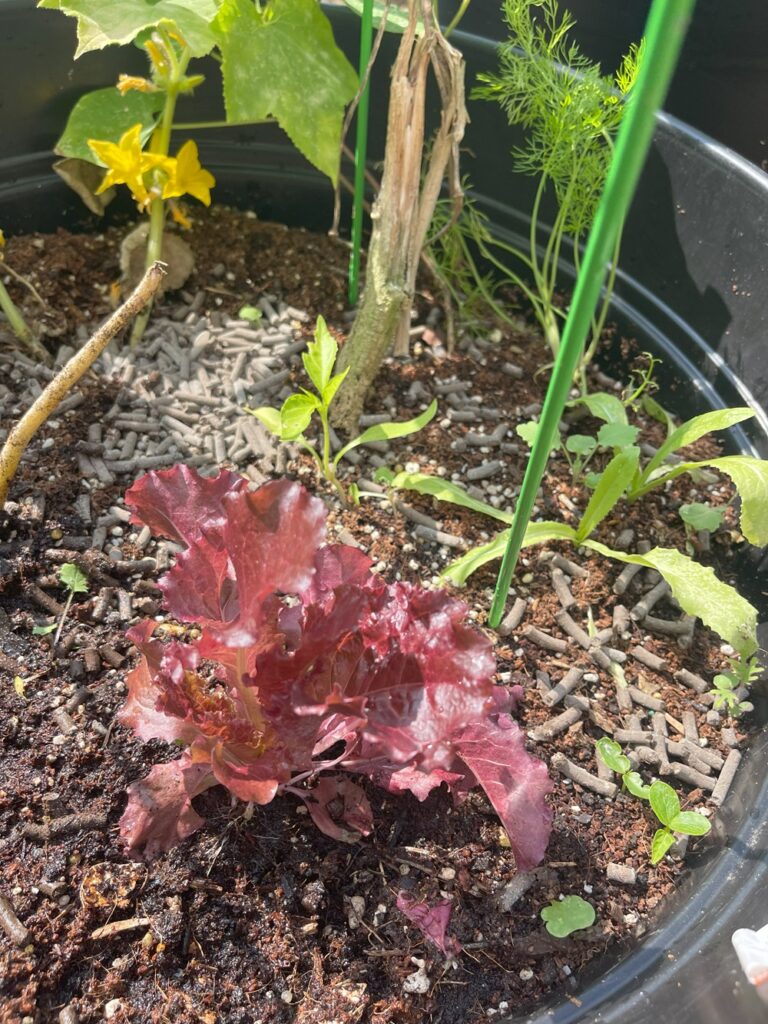
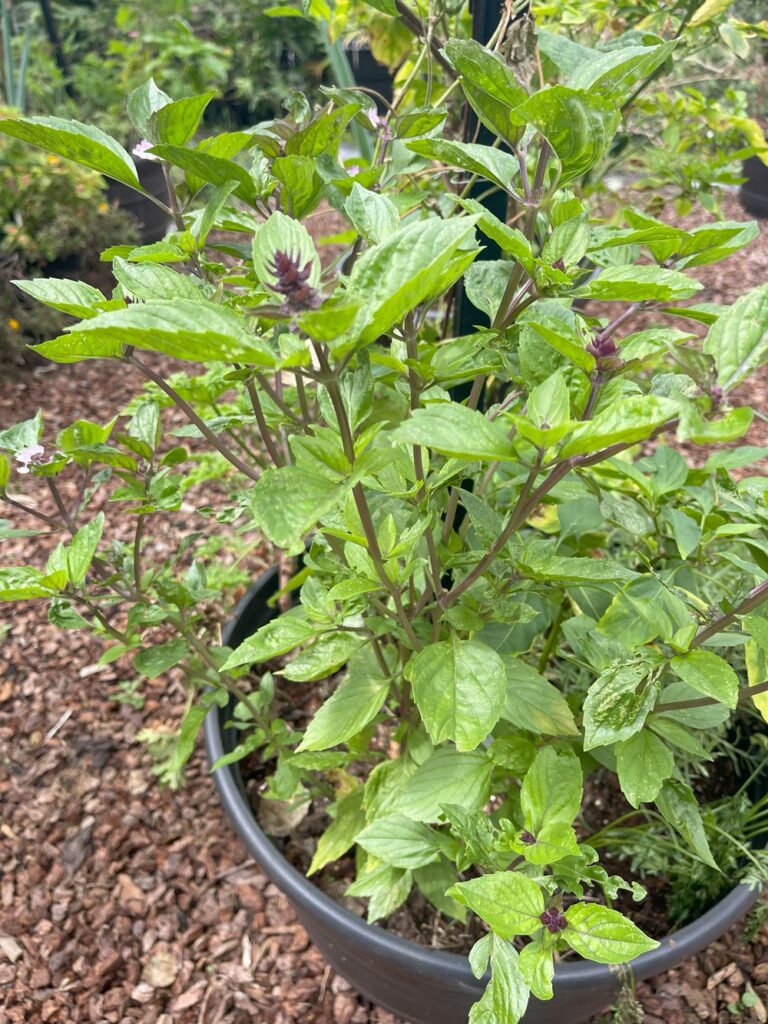
- Vegetables
- Cherry Tomatoes: Sweet and juicy, they’re a salad staple. If you’re a beginner gardener, cherry tomatoes are generally easier to grow than larger tomatoes and they mature much faster.
- Cucumbers: Refreshing and easy to grow in most areas. Cucumbers (and most squash) can be challenging in Hawaii due to the squash borers and pickle worms.
- Radishes: Add a peppery crunch and grow quickly. Radishes are a great beginner vegetable, they grow fast and generally don’t have many pest issues.
- Carrots: Crunchy and colorful, carrots add flavor and beauty to any salad. Carrots take longer to grow then most other vegetables listed here, but they’re easy to grow and worth the wait.
- Edible Flowers
- Nasturtiums: Bright, colorful, and slightly spicy. These are fun and easy to grow.
- Pansies: Mild and visually stunning. Pansies are generally slightly more challenging to grow than nasturtiums, but they’re so pretty, they’re worth the work.
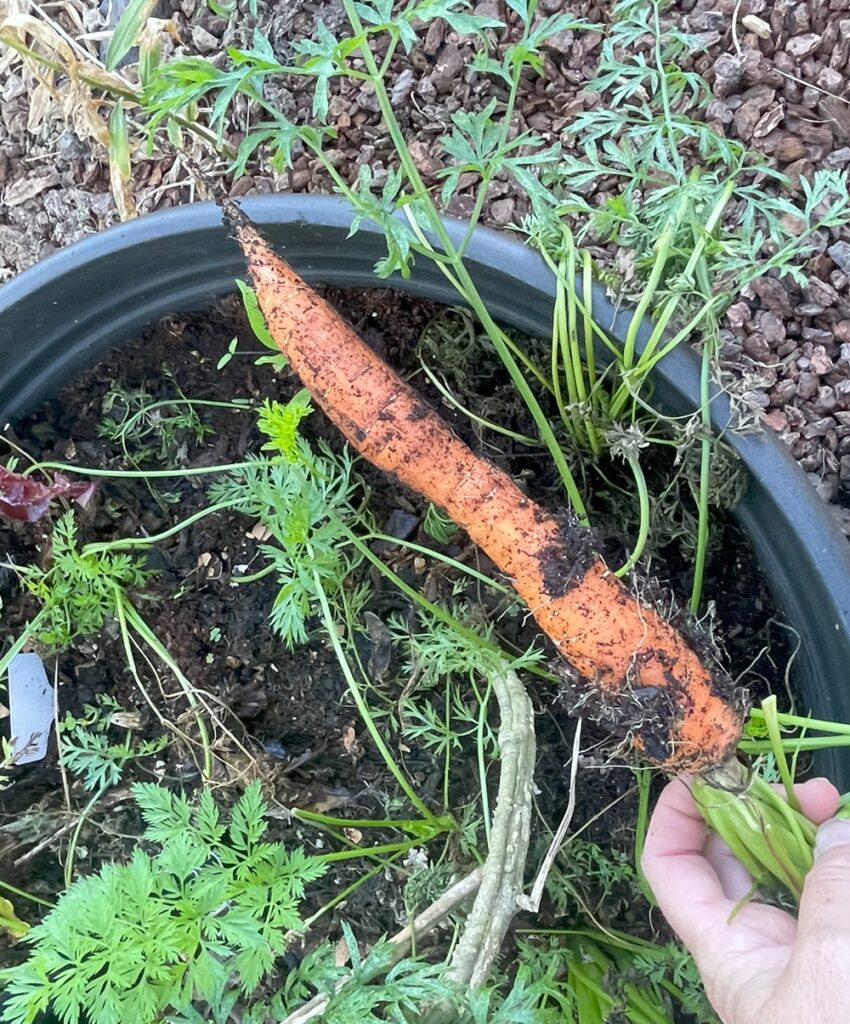
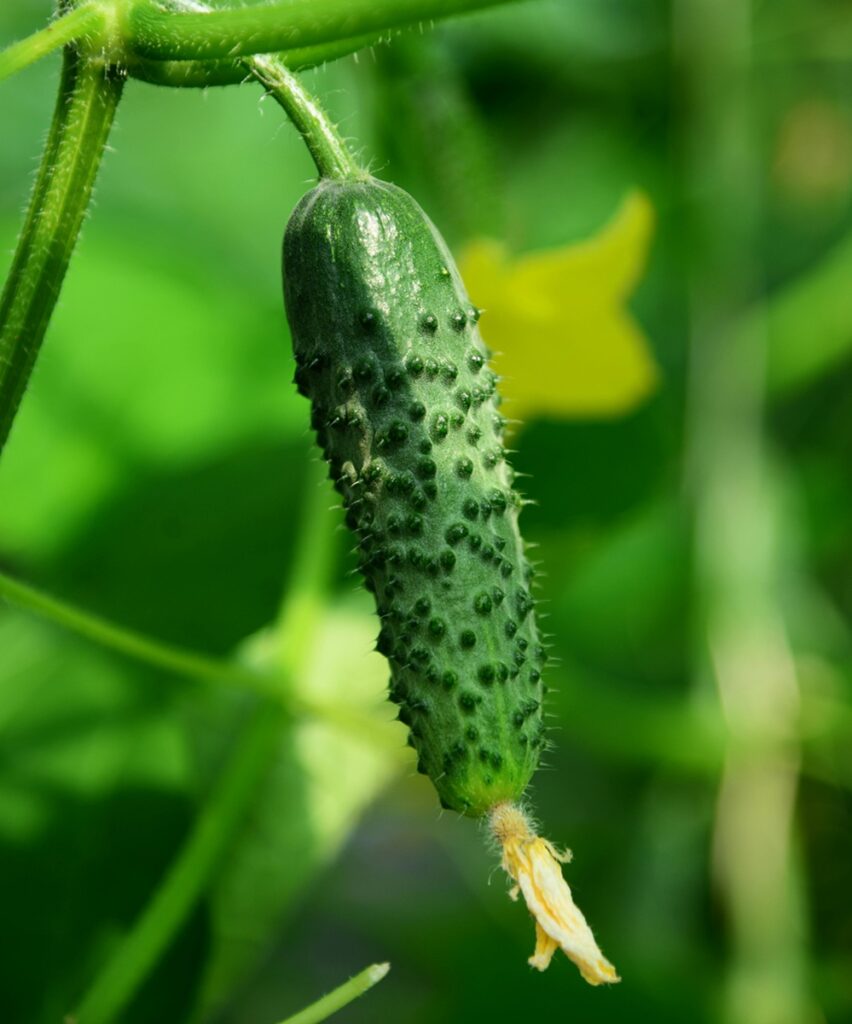
How to Start Your Salad Garden
Choose the Right Location
Most salad greens prefer partial sun (4-6 hours of sunlight per day). If you’re limited on space, consider container gardening. None of the plants listed about need too much space, so a lanai container garden is a great option.Prepare the Soil
Use well-draining soil rich in organic matter. Add compost to boost fertility.Planting Tips
Seeds vs. Seedlings: Seeds will take a bit longer to establish, but you can grow more and try more varieties with seeds. Seedlings will be ready to harvest faster, but you’ll be limited to varieties you can find in your area. Note: carrots are often not available as seedlings because they are difficult to transplant, it’s best to start carrots from seeds.
Succession Planting: Sow seeds or seedlings every 2-3 weeks for a continuous harvest. If you succession plant, you can have fresh garden salads for the entire growing season!
Watering and Care
Keep the soil consistently moist but not waterlogged. Mulch around plants to retain moisture and suppress weeds.Harvesting
Use the “cut-and-come-again” method for leafy greens: snip outer leaves, and the plant will keep producing. Harvest herbs regularly to encourage bushier growth. For radishes and carrots, gently push soil away from the base of the plant, when the root is about the size of a quarter, pull it out of the ground. There is something very satisfying about pulling a root vegetable out of the ground!
Recipe: Fresh Garden Salad
This simple salad can be modified using what you like to eat and grow. Feel free to experiment and find combinations you love. I like to add grilled chicken and avocados when my tree is producing.
Ingredients:
- Mixed lettuce leaves
- Handful of spinach or kale
- Cherry tomatoes, halved
- Sliced cucumbers
- Fresh basil and oregano
- Edible flowers for garnish, such as nasturtium (optional, but makes it feel like a fancy salad)
Dressing:
- 3 tbsp olive oil
- 1 tbsp lemon juice
- 1 tsp honey, may be omitted for a low sugar option
- Salt and pepper to taste
Instructions:
- Wash and dry all greens and vegetables.
- Chop all greens and vegetables to desired bite sizes.
- Toss everything together in a large bowl.
- Whisk dressing ingredients and drizzle over the salad.
- Garnish with edible flowers and serve immediately.
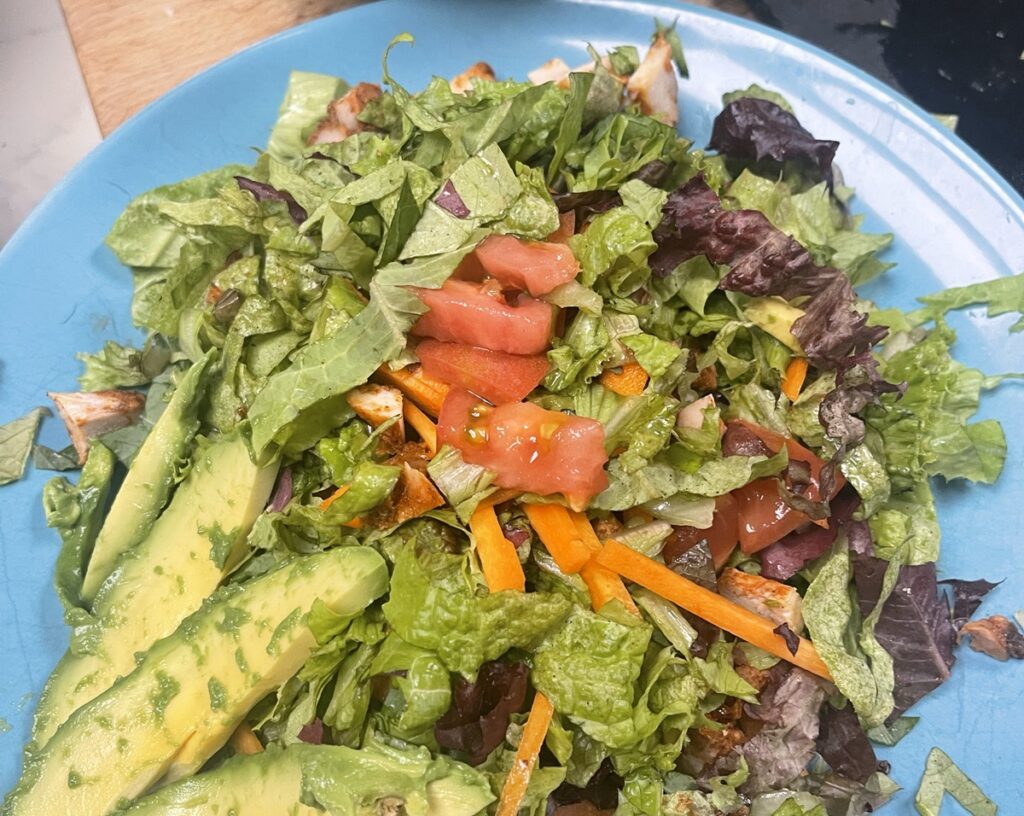
Want more gardening inspiration? Join the Adventures in Botany Community and connect with fellow plant lovers! Follow us on, Instagram, TikTok, and YouTube for more gardening tips, DIY projects, and nature-inspired content.

